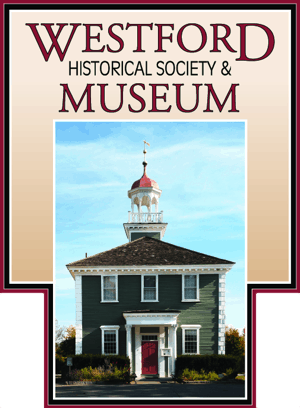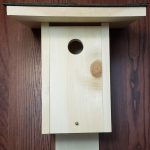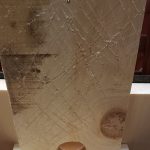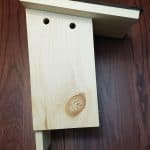Don’t let this deal fly-away!
Order your Bluebird Birdhouse Today.
Handcrafted by the carpentry students of Nashoba Valley Technical High School
16”x 8” with 12” roof that included asphalt shingle, weight 6lbs.
Based on the design recommended by Audubon Society.
$35 Donation (curbside pick-up) the Cottage 4 Boston Rd.
Contact Linda at director@museum.westford.org for Shipping and Handling pricing
Bluebird’s usually nest fairly low (2-20′ above the ground), occasionally up to 50′. Nest in cavity (built mostly by females) is a loosely constructed cup of weeds, twigs, and dry grass, lined with finer grass, sometimes with animal hair or feathers.
This campaign has concluded. If you’d like to support the museum, please consider becoming a member or making a general donation
More about Eastern Bluebirds here
How to Install a Bluebird House
Bluebirds like fairly open areas, with scattered trees for perching. Organic farmland is perfect, with open spaces bordered by fences and tree lines.
In more developed areas, bluebirds are likely to be found around large open lawns, quiet roadways, old railroad paths, parks, cemeteries, golf courses, new housing developments, and neighborhoods on the edge of cities. They usually don’t hang out in heavy woods or city centers.
When installing a bluebird house, consider:
-
- Location: While scattered trees or shrubs are fine, choose a fairly open spot away from woods.
-
- Mounting: A pole or fence post is ideal, especially if you can add a baffle to keep out predators such as cats, snakes, and raccoons. Mount the house at around 5’ high, so that you can easily reach it to monitor and clean.
-
- Orientation: Ideally, face the opening toward a safe perch, such as a small tree or fence. Also try to face it away from prevailing winds, and away from midday sun in hot climates. If you are installing the house near a road, face it parallel to the road, so the birds won’t fly out directly into traffic.
-
- Spacing: Bluebirds are competitive and usually claim two or three acres, so be sure their houses are widely spaced. Eastern bluebird houses should be 100-150 yards apart, and Mountain and Western bluebirds should be over 200 yards apart.
- Organic Garden: Since bluebirds eat insects, they can provide natural insect control, but avoid areas with heavy application of pesticides.



